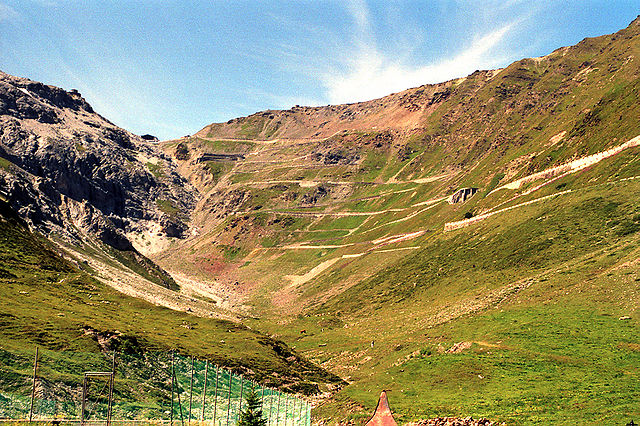A mountain pass is a navigable route through a mountain range or over a ridge. Since mountain ranges can present formidable barriers to travel, passes have played a key role in trade, war, and both human and animal migration throughout history. At lower elevations it may be called a hill pass. A mountain pass is typically formed between two volcanic peaks or created by erosion from water or wind.
Sani Pass in Mokhotlong, Lesotho
Idealised mountain pass represented as the green line; the saddle point is in red.
Col between Kensgriff and Yarlsidine in the Howgill Fells, England
Stelvio Pass in the Alps (Italy)
A mountain range or hill range is a series of mountains or hills arranged in a line and connected by high ground. A mountain system or mountain belt is a group of mountain ranges with similarity in form, structure, and alignment that have arisen from the same cause, usually an orogeny. Mountain ranges are formed by a variety of geological processes, but most of the significant ones on Earth are the result of plate tectonics. Mountain ranges are also found on many planetary mass objects in the Solar System and are likely a feature of most terrestrial planets.
The Namcha Barwa Himal, east part of the Himalayas as seen from space by Apollo 9
The Andes, the longest mountain range on the surface of the Earth, have a dramatic impact on the climate of South America
Montes Apenninus on the Moon was formed by an impact event.







